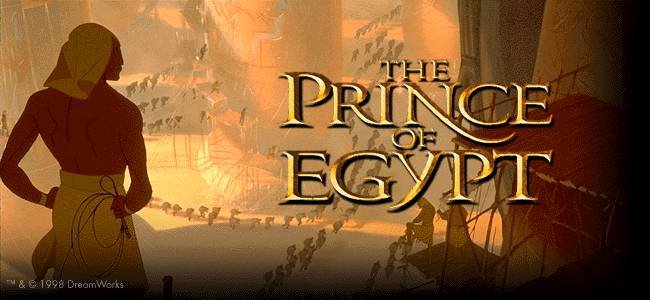The Passion of the Christ was released in 2004. It was directed by Mel Gibson and stars Jim Caviezel as Jesus. I'll skip the summary again as it would just be redundant.
 The Passion is a great film. Aided in part by the use of Aramaic and Latin dialogue it looks and feels very historically accurate and it stays true to the biblical narrative. But more than that it's a very deep and contemplative film. Christ's passion is inter-cut with the Last Supper, showing the connection between His death and Catholic Eucharistic sacrifice. Added scenes like Mary and Mary Magdalene wiping up the sacred blood after the scourging and flashbacks to Christ's childhood give viewers an appreciation of the blessed Virgin's sorrowful participation in the passion. The presence of Satan and other demons throughout the film symbolizes the struggle between good and evil, heaven and hell, a struggle which Jesus brought to a definitive close through his Paschal sacrifice.
The Passion is a great film. Aided in part by the use of Aramaic and Latin dialogue it looks and feels very historically accurate and it stays true to the biblical narrative. But more than that it's a very deep and contemplative film. Christ's passion is inter-cut with the Last Supper, showing the connection between His death and Catholic Eucharistic sacrifice. Added scenes like Mary and Mary Magdalene wiping up the sacred blood after the scourging and flashbacks to Christ's childhood give viewers an appreciation of the blessed Virgin's sorrowful participation in the passion. The presence of Satan and other demons throughout the film symbolizes the struggle between good and evil, heaven and hell, a struggle which Jesus brought to a definitive close through his Paschal sacrifice. As was Gibson's intent, it's not a dialogue driven film but a visually driven one. In the agony in the Garden Jesus stamps on a snake, symbolizing His triumph over the devil in accepting His Father's will. It also shows the fulfillment of the Protevangelium "he will crush your head and you will strike his heel.” (Genesis 3:15 b). Later, as Jesus drags his cross through Jerusalem his mother is shown following him on one side of the street with Satan on the other, further emphasizing the conflict laid down in the Proto-gospel, "And I will put enmity between thee and the woman, and between thy seed and her seed" (Genesis 3:15 a) The film is filled with all kinds of similar symbolism. Originally, Gibson wanted to release the film without subtitles, saying that the story was so well known that audiences could follow it without understanding the dialogue. In the end he decided it was necessary to use them in certain parts though much of the talking is still subtitle free. The film works amazingly well despite this sparse use of subs and in the future I would like to try watching it with them turned off.
The performances are strong throughout the picture. Maia Morgenstern as Mary and Francesco De Vito as Peter are especially strong and Rosalinda Celentano brings a creepy, sinister presence to Satan. Of course the real stand out performance comes from Jim Caviezal. His Jesus is both stern and gentle, God-like and human. His serenity during his trial and condemnation display his divinity, and his sufferings help to show his humanity. A flashback, where he and his mother playfully tease each other, further emphasizes his human side. This is the man who was kind to children and showed love to tax collectors and sinners.
The movie does have a few flaws. Personally, I found the score a little too percussion driven, though I'll admit that this gives it a savage, primal feel appropriate for the more violent scenes and there are some nicer, more subtle moments. The one really big issue is the films portrayal of Caiaphas, the Jewish high priest. In the bible, during a meeting of the Jewish Sanhedrin, he reveals his motivation for having Jesus killed: he fears that He will incite a rebellion and Rome will retaliate "You do not realize that it is better for you that one man die for the people than that the whole nation perish." (John 11:50) This motive is never shown in the film nor is the Pharisees fear of losing their prestige because of Jesus. In contrast to this Pilate is given scenes that help to further establish his own motives for delivering Jesus to the Jews. Like Caiaphas he too fears a rebellion, as this would reflect badly for him in Rome. Some have argued that because of this the film is anti-Semitic. They say that it is placing the blame for Christ's death solely on the Jews and going out of its way to make excuses for the Romans. However the film is not afraid to show the Romans in just as bad a light, as evidenced by the barbaric portrayal of the Roman guards. In addition to this, Caiaphas is shown being disturbed at the soldiers' treatment of Jesus and other Jewish figures like Simon of Cyrene, Joseph of Arimathea, and Nicodemus are portrayed in a much more positive light. Finally the film doesn't blame for Jesus' death fully on the Jews or the Romans but show's that we're all culpable. "No one takes my life from me, but I lay it down on my own accord." These accusations of anti-Semitism are baseless. Nevertheless the lack of historical background for the Pharisees plot against Jesus is an issue, especially for non-believers who may not be as familiar with the story.
The Passion of the Christ is a stirring artistic achievement. It's a film that I'd recommend to everyone, particularity Catholics (as long as you can stomach a little graphic violence). It's the kind of film that I question giving a rating too. To apply a numeric rating to such a meditative work of art seems somehow shallow and meaningless. However I have done so throughout this Lenten project so...
Rating: 9.5/10













